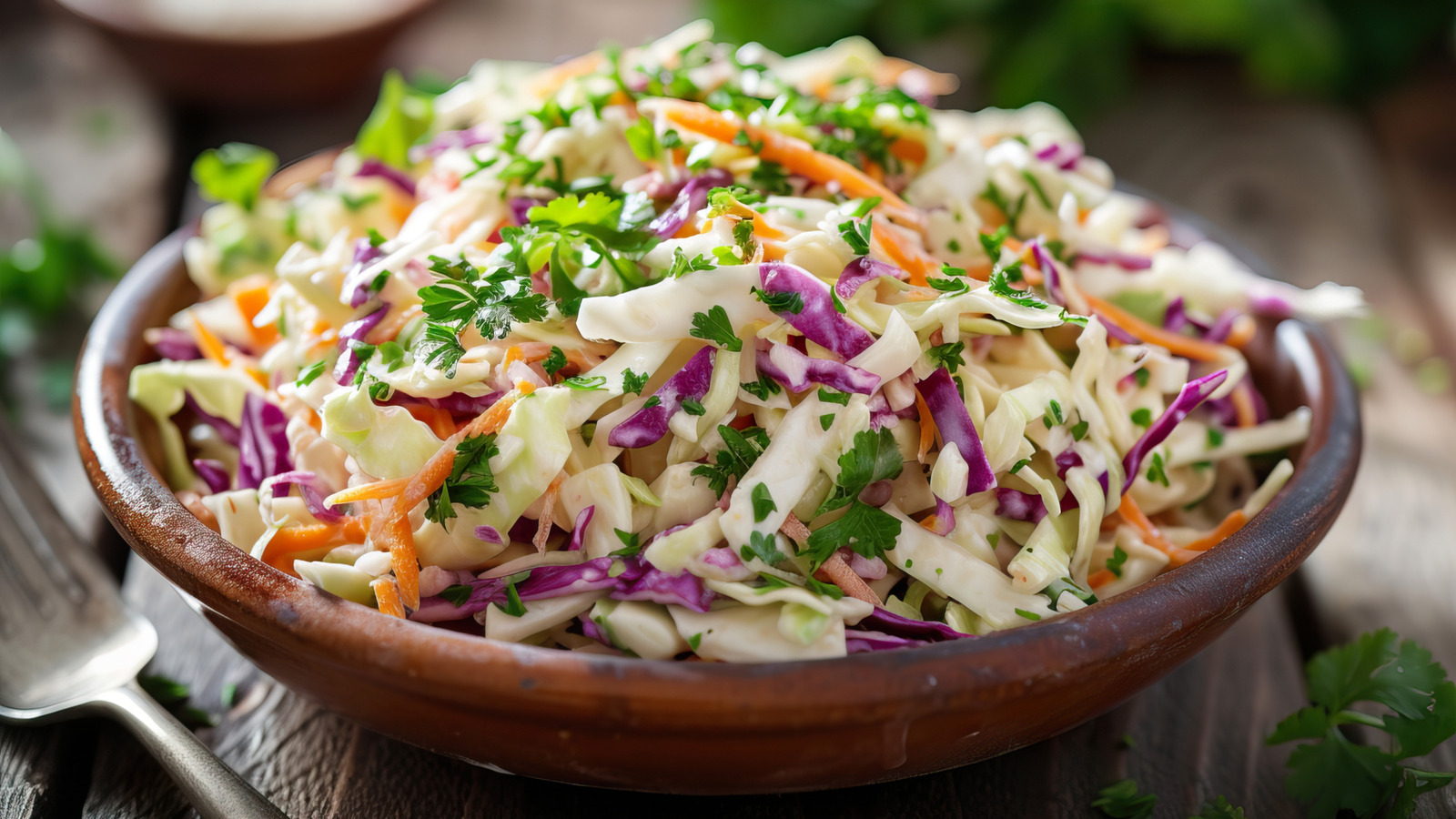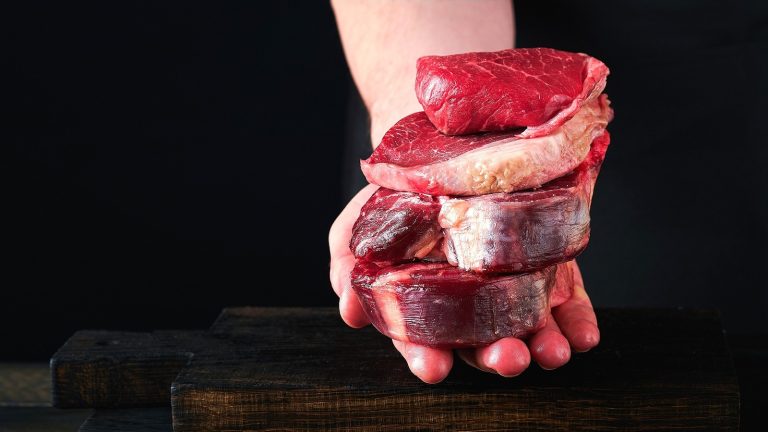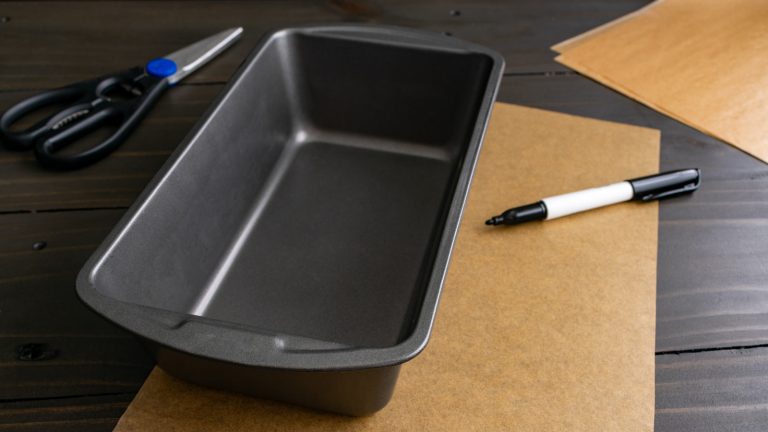In eateries across the U.S., coleslaw makes frequent appearances. Most often, it’s a commonplace side that doesn’t demand attention as the malleable flavor and composition let other dishes shine. Nevertheless, sample a bite while dining out, and the dish dependably has an extra edge. Whether it’s at a fast food place, a must-visit barbecue spot, or an upscale eatery, coleslaw prepared in a restaurant setting gets a special touch from the kitchen.
Well, have no fear — there are actionable enhancements that you can bring into your homemade slaw. From understanding the importance of salting to tailoring the cabbage variety and mixing in differently textured vegetables, small modifications make a big difference. Crafting a delicious coleslaw is more than just selecting the best recipe; it’s understanding how each component makes the dish pop. Restaurants spend hours of work and go through buckets of cabbage to nail down their mix, employing some crafty techniques in the process. Even if you translate just a few of these methods into the home kitchen, you’ll find some easy ways to enhance your coleslaw.
Chefs pay special attention to cabbage
For starters, restaurants place extra emphasis on the cabbage. As the component central to the dish, careful vegetable consideration seems obvious, but nevertheless, certain details are easy to overlook. Freshness is paramount; stale cabbage will yield a soggy, wilted slaw. So, just like how restaurants entrust their suppliers, head to a grocery store and select the freshest cabbage heads you can find.
Furthermore, there’s also the variety of cabbages to consider. Candidates include the green cabbage — the classic slaw pick — which offers a stalky texture and balanced flavor. Red cabbage brings out more of a peppery note and has an even crunchier consistency as well as color that spreads onto neighboring ingredients. Other options include the softer and leafier savoy and napa cabbage, which are less frequently used in coleslaw applications.
Since restaurants have the benefit of preparing their slaw in large volumes, they often blend varieties. Green and red are a classic pairing as they create the crunchiest rendition. However, for a softer, more salad-like take, you’ll sometimes see savoy in the mix, and for a coleslaw that dips into the kimchi world, napa can be creatively employed.
Good coleslaw contains intriguing textural components
While cabbage may be the star of the show, a restaurant-quality coleslaw typically utilizes additional ingredients. Other vegetables bring a new exciting texture to the slaw, as well as a bright dash of flavor. Sure, ingredients like red onions and carrots are a classic way to add some variety into the mix. However, many chefs don’t stop there –they create culinary connections that’ll impress diners.
Consider shredded Brussels sprouts — which are also part of the cabbage family — or raw squash, broccoli, or celery for an unexpected twist. Salad favorites like jicama, apples, bell peppers, and cucumbers are underutilized in coleslaw recipes, and don’t forget the power of chopped herbs, nuts and seeds, and even cheese to add a pleasant mouthfeel. A tasty salad is first and foremost a textural dish, so a pleasantly unexpected surprise adds to a diner’s enjoyment.
At a certain point, it’s more in the mouthfeel than the ingredients. In order to really make your homemade coleslaw pop, invest in a mandoline. Professional kitchens readily employ this underutilized kitchen tool to slice on an industrial scale, and it’s a great instrument for the home kitchen, too. When cabbage slivers are the ideal thickness, carrots are julienned uniformly, and creative vegetable additions are sliced thin, coleslaw takes on that restaurant-quality crunch.
Restaurants perfect their coleslaw dressing
Once the vegetables are chopped and ready, the next step is applying the dressing. Across the board, restaurant salads taste better due to the careful combination of ingredients with quality dressing. Keep in mind that less is more — coleslaw only needs a light touch of dressing to shine. As a result, the right combination of mayo, mustard, and vinegar is all it takes for a classic rendition.
However, chefs also consider their accompanying dishes when crafting the dressing. If the slaw is designed for meats, then it’s wise to go heavier on the vinegar — perhaps even omitting the mayo completely. Alternatively, if fried food will be served, then a touch more mayo can lend creaminess that contrasts the dish’s crispness. Furthermore, the coleslaw template can be transferred to other cuisines. Whether it’s chiles and coconuts for a South Asian spin or peanut butter soy for a Thai flavor, dressing presents a way to integrate a culinary flourish into your meals.
Not all creative twists need to be complicated; there’s power in cleverly using already bottled sauces. One unexpectedly delicious ingredient for an unconventional coleslaw is ketchup, which adds both a tang and sweetness. Or, if you’re after a bright and smokey mood, throw a white barbecue sauce into your slaw. If you’ve already put in the effort of carefully selecting and chopping your ingredients, a single condiment modification can make a big difference to the final dish.
Seasoning coleslaw makes a big difference
As with most culinary endeavors, salt plays a crucial role. This rule applies to slaw as well; throw the mineral onto the cabbage early in your preparation, and it’ll drastically improve the salad. Restaurants know to let their salted cabbage rest for around an hour, thereby releasing some water and enhancing the crunch. Once the time’s up, the vegetable is drained, patted dry, and ready for use.
Not only does salting yield a more satisfying crunch, but it also improves the mingling of cabbage and dressing. It’ll meld the consistency, thereby preventing most of the dressing from accumulating on the bottom of the dish. Chefs further accentuate the textural quality by adding sugar into the mix; the pantry staple further binds it all together, and a bit of sweetness improves the complexity of the slaw’s flavor.
There are other flavors that go in during the seasoning step as well. Chefs know to add a solid quantity of black pepper — perhaps a little more than you may expect — and further intriguing flavors can come in the form of onion and garlic powder, both of which enhance with their pungency. Plus, whole spices like anise and celery seed can invoke a sweet, lightly spicy note into the mix. Don’t forget that cold food generally needs more seasoning, so it’s critical to know the appropriate quantity to add into the dish.
Coleslaw’s timing preparation matters
Finally, the coleslaw is assembled with all the ingredients combined. While a home cook might be eager to serve and enjoy the dish immediately, restaurants prep the slaw early. This extra marination time is an advantage, tying together flavors and softening the texture. Craft the dish a couple of hours in advance, and you’ll find the flavors better meld together. Plus, cooling the salad down in the refrigerator delivers an added crispness.
Once served, don’t allow the coleslaw to remain out for more than two hours at room temperature. Per the U.S.D.A., the risk of foodborne illness increases dramatically after such a duration. Furthermore, if it’s above 90 degrees Fahrenheit, the timing is cut down to one hour, so be extra cautious during an outdoor barbecue. And while it’s good for the coleslaw to spend some time in the fridge, you’ll want to eat it all within two to three days. Like a well-oiled business, deliver the salad with the right timing, and it’ll fully impress your guests.




